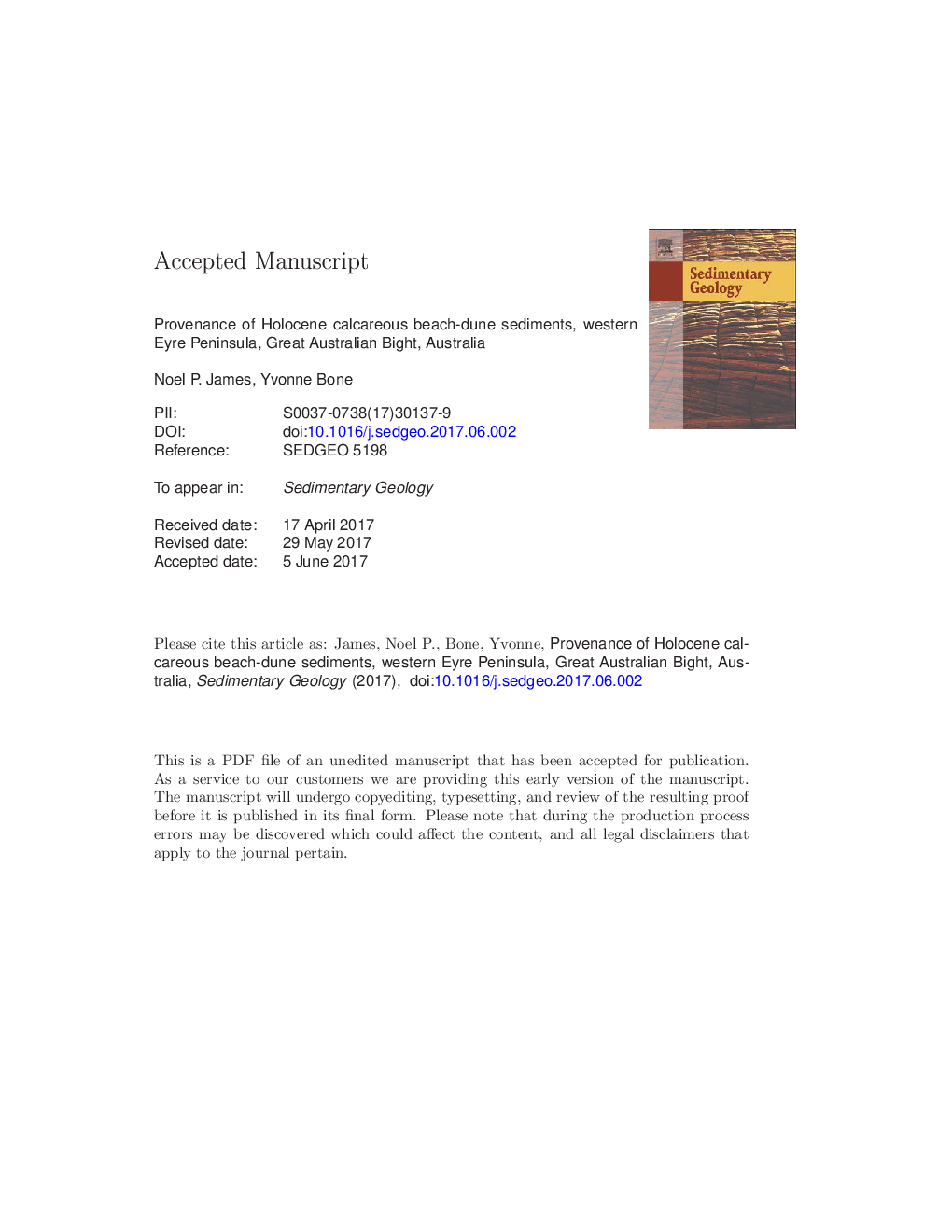| کد مقاله | کد نشریه | سال انتشار | مقاله انگلیسی | نسخه تمام متن |
|---|---|---|---|---|
| 5781298 | 1636006 | 2017 | 59 صفحه PDF | دانلود رایگان |
عنوان انگلیسی مقاله ISI
Provenance of Holocene calcareous beach-dune sediments, Western Eyre Peninsula, Great Australian Bight, Australia
دانلود مقاله + سفارش ترجمه
دانلود مقاله ISI انگلیسی
رایگان برای ایرانیان
کلمات کلیدی
موضوعات مرتبط
مهندسی و علوم پایه
علوم زمین و سیارات
فرآیندهای سطح زمین
پیش نمایش صفحه اول مقاله

چکیده انگلیسی
Much of western Eyre Peninsula adjacent to the Great Australian Bight is veneered with siliceous and calcareous Quaternary aeolian dunes. The lengthy coastline adjacent to this cool-water carbonate factory is a series of Precambrian crystalline bedrock-Pleistocene aeolianite headlands that separate many long, sweeping, Holocene carbonate sand beaches and their backbeach dunes. Incessant SW waves, rolling swells, and onshore winds have resulted in > 350 km of semi-continuous calcareous strandline aeolian sands. The sediment is composed of quartz grains, Cenozoic limestone clasts, and relict particles (extraclasts) but the deposits are overwhelmingly dominated by contemporaneous biofragments from offshore. These skeletal grains are, in order of relative abundance, molluscs > benthic foraminifers > coralline algae > bryozoans, and echinoids. Benthic foraminifers are mostly small (especially rotaliids and miliolids) but the large relict symbiont-bearing protist Marginopora vertebralis, which grew in the latter stages of MIS 2, is present locally. There are no significant onshore-offshore trends within individual beach-dune complexes. There is, however, a prominent spatial partitioning, with extraclast-rich sediments in the north and biofragment-rich deposits in the south. This areal trend is interpreted to result from more active seafloor carbonate production in the south, an area of conspicuous seasonal nutrient upwelling and profound nektic and benthic biological productivity. The overall system is strikingly similar to Holocene and Pleistocene aeolianites along the inboard margin of the Lacepede Shelf and Bonney Coast some 500 km to the southeast, implying a potential universality to the nature of cool-water carbonate aeolianite deposition. The composition of these cool-water aeolianites is more multifaceted than those formed on warm-water, shallow flat-topped platforms, largely because of the comparatively deep, temperate shelf, the high-energy wave and swell climate impacting the shoreline, and thus the different geohistory during sea level change.
ناشر
Database: Elsevier - ScienceDirect (ساینس دایرکت)
Journal: Sedimentary Geology - Volume 357, 15 July 2017, Pages 83-98
Journal: Sedimentary Geology - Volume 357, 15 July 2017, Pages 83-98
نویسندگان
Noel P. James, Yvonne Bone,